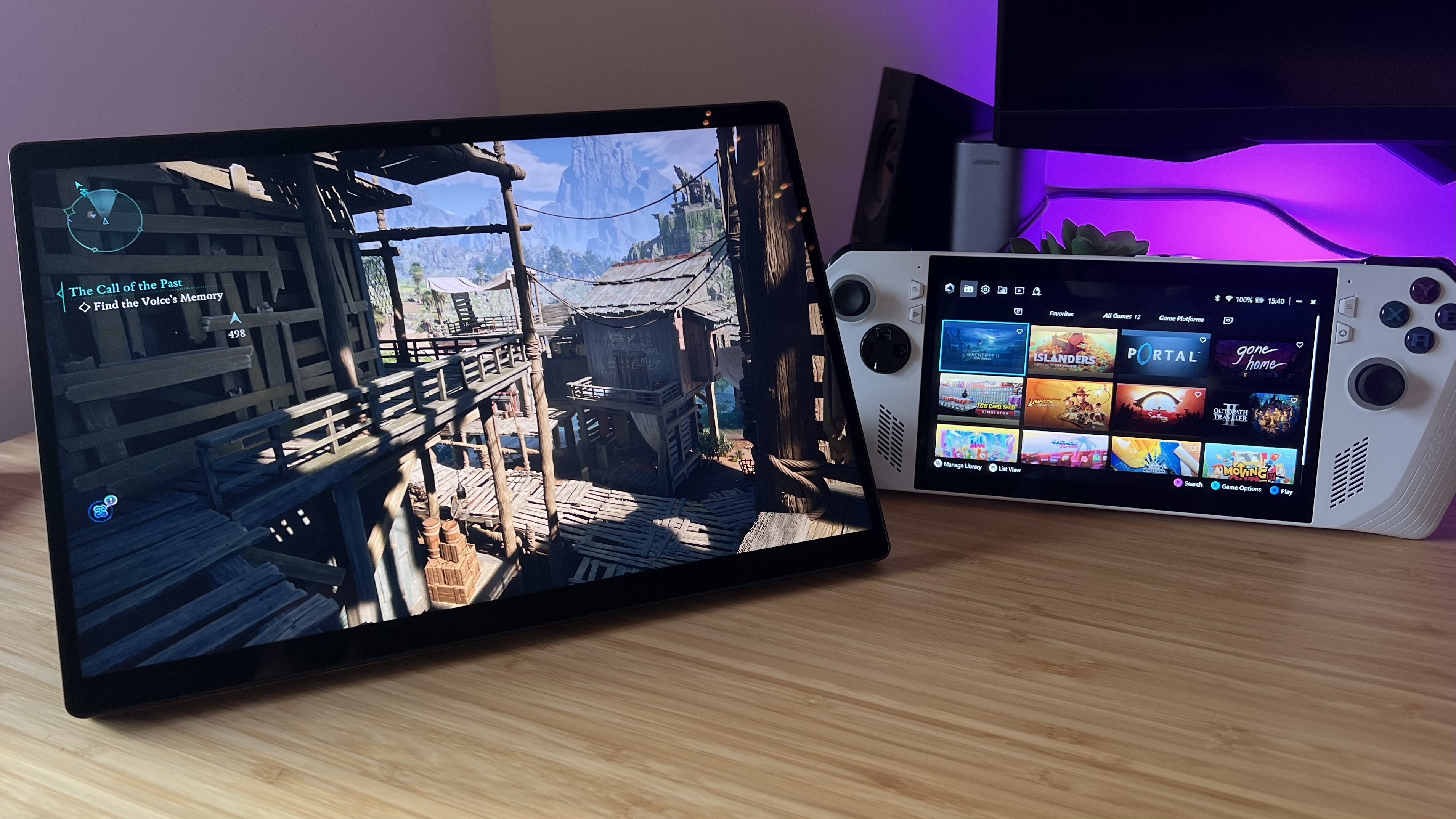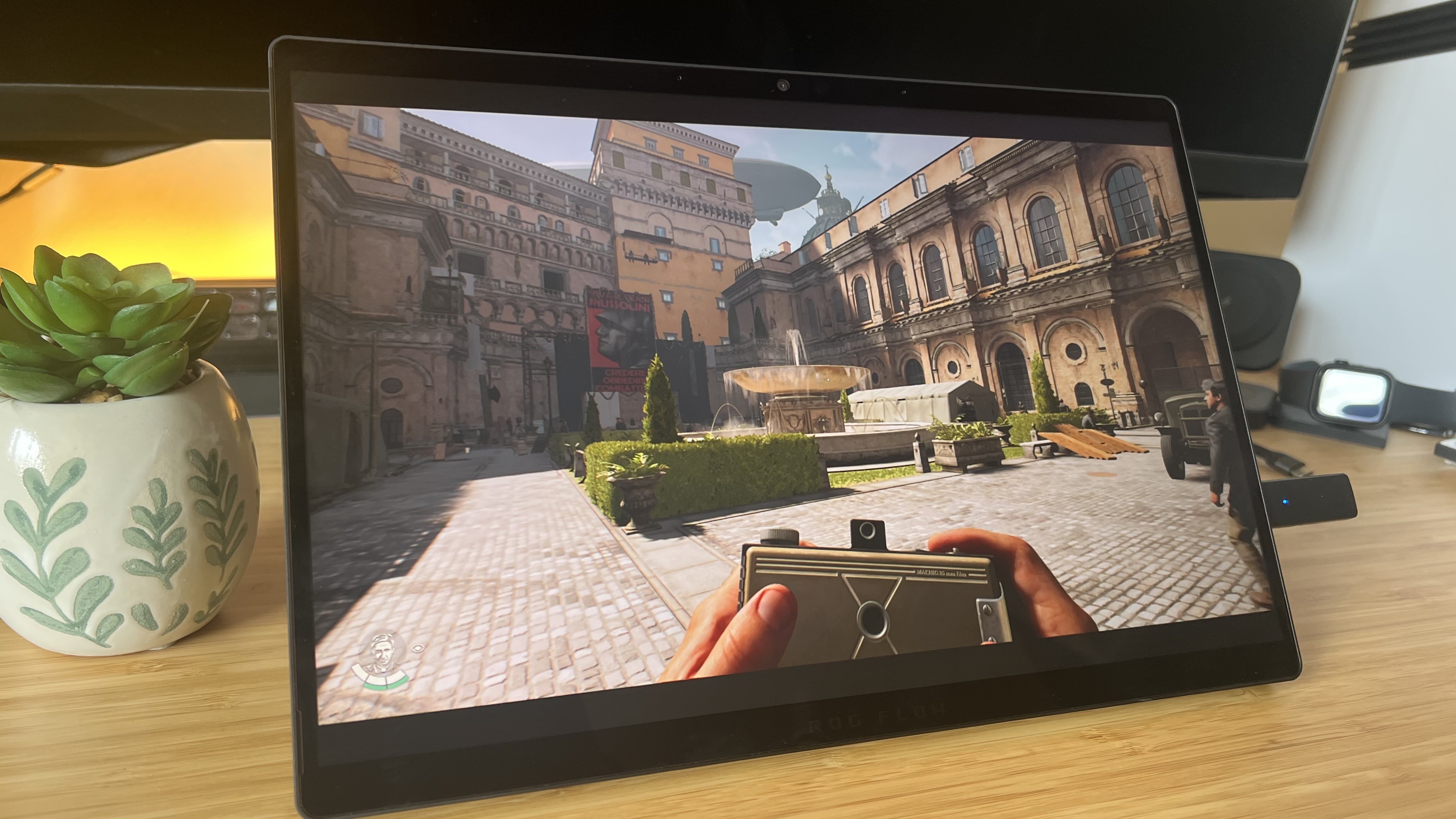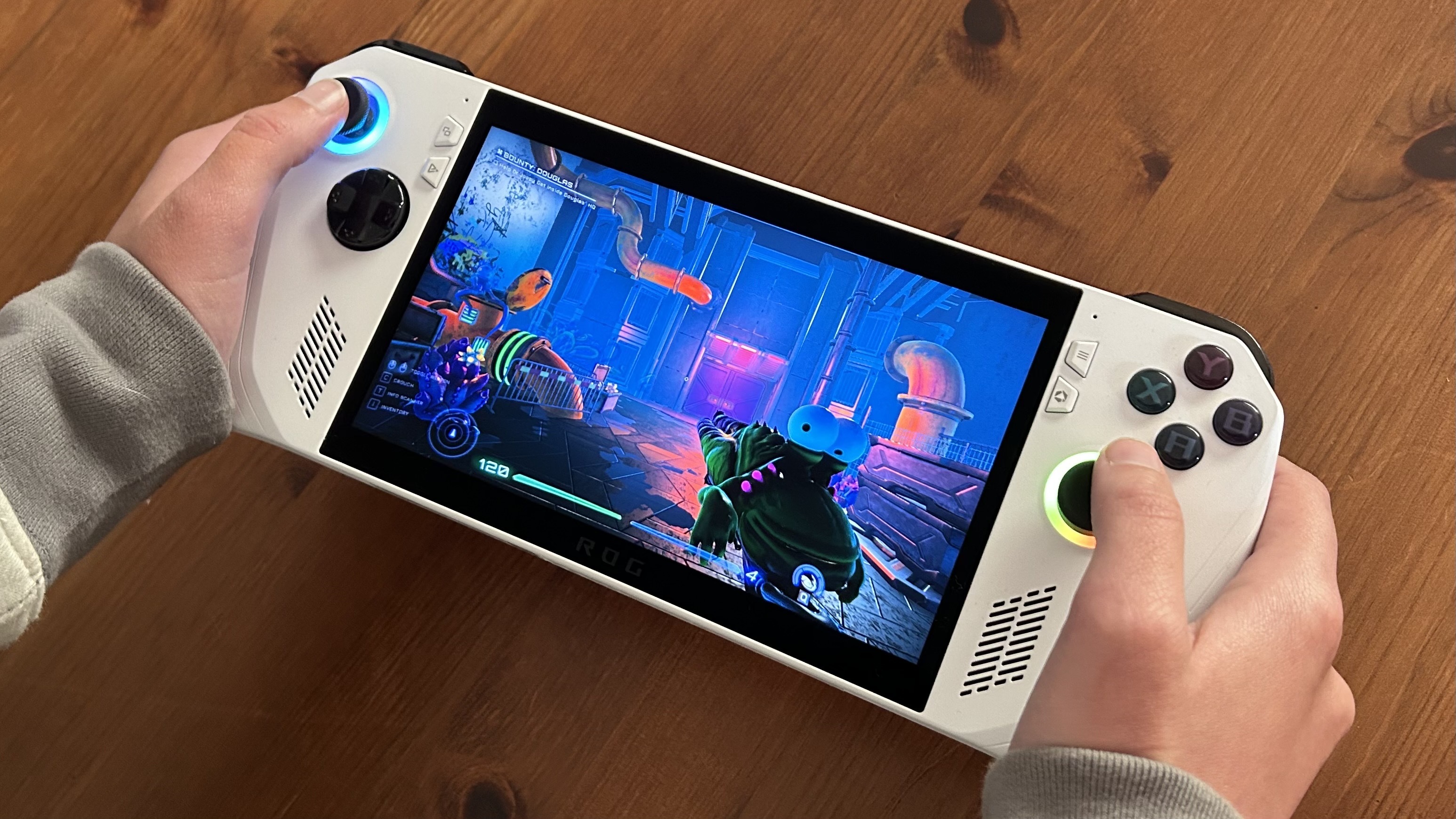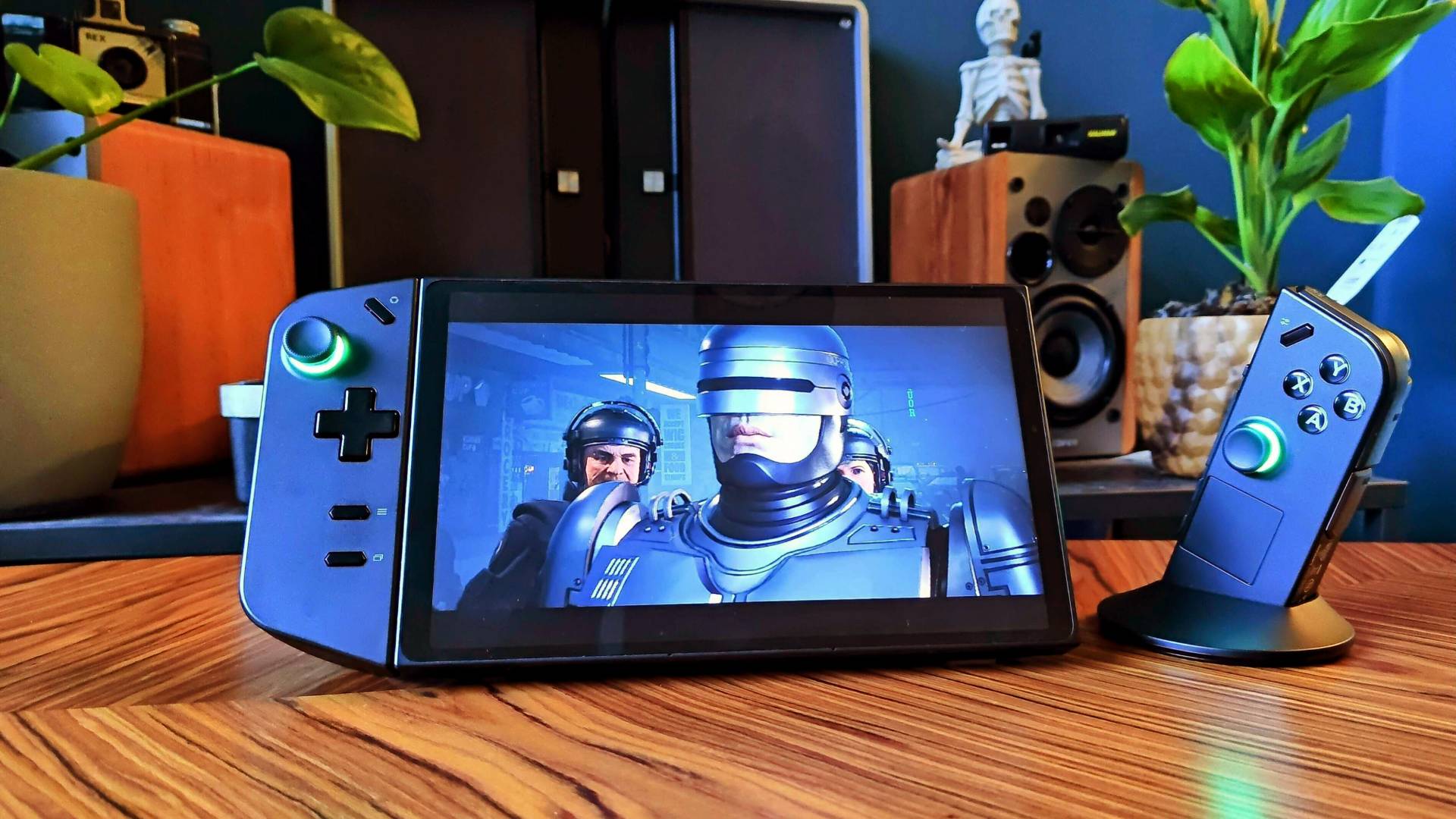This gaming tablet's processor could be the holy grail for handhelds
A massive step forward in the tablet space spells hope for handhelds

I've been playing the hell out of Avowed over the last few days, and I've been doing it all on a tablet. I'm not talking about Xbox streaming via an iPad or Samsung Galaxy - this is full native Windows 11 gameplay running through an Asus ROG Flow Z13. It's like magic.
There's no dedicated graphics card in this screen-only device, instead Asus has packed it with the AMD Ryzen AI Max 390, a Strix Halo CPU announced only last month. The AI-focused processor combines 12 Zen 5 CPU cores (and 24 threads) with 32 graphics cores. The chip can clock at up to 5GHz, drawing a massive 120W in the process. That's a lot of power for the best gaming tablet on the market, but I'm more excited by what this chip can bring to the smaller screen. After all, both industries are playing the same game, they both want to make their mobile devices as efficient as possible, and the last few years' worth of developments in the world of gaming laptops and other portable devices has shown just how quickly this tech is shrinking. The handy thing about tablets is they're doing all this a few years ahead of handhelds, so they provide a pretty secure model for mapping a similar timeline.

The last Asus ROG Flow Z13 I tested came with a full RTX 3050 Ti whirring away under the hood, hitting framerates around 50% lower than those of the 2025 model in FHD. That was three years ago, before the world had even set eyes on an Asus ROG Ally or Lenovo Legion Go. Sure, PC handhelds have been around for much longer than these mainstream flagships, but as prices drop and focuses turn to efficiency in the mobile market, a much faster pace has been set. Even the best gaming handhelds are still considerably less powerful than the Asus ROG Flow Z13 - and they're always going to be. They're much smaller, have to house a lot more tech in the same compartments, need to dedicate more power to their batteries, and are roughly a quarter of the price. I'd never expect to see an AMD Ryzen AI Max 390 in a handheld system, it's just too power-hungry to work in these smaller chassis'.
The PC handheld industry is still relatively young - it's hit the mainstream like a ton of bricks in the last few years, but it's yet to hit its true potential. I can't run Avowed on my Asus ROG Ally without it looking like a PS2 game - these aren't miraculous Triple-A machines... yet.
Give it a few more years

I've re-run benchmarking tests on the Asus ROG Ally, and Phil's taken new numbers from the Ayaneo Flip DS, and the gap between today's handhelds and yesteryear's tablets isn't massive. The difference between Time Spy and Fire Strike benchmarks between the old ROG Flow (RTX 3050 Ti) and the current slate of some of the most powerful handhelds is one I would expect to see between equally powerful devices running in different form factors. Cooling and size plays a massive role in how performant a device will be once a game is actually loaded up. It was certainly throttling the ROG Flow Z13 back in 2022, but the 2025 model's score shows just how far we've come.
In three years, the Asus ROG Flow Z13 has increased its overall performance by around 89% on average between these two tests (52% in Time Spy and 124% in Fire Strike). Of course, that's not all down to AMD's super efficient AI chip - Asus has made improvements in thermal design and its own engineering processes as well. That's still a big leap in three years - and as the same developments filter down to the cheaper handheld spectrum, I'm hopeful we'll see similar progression on the smaller screen.
Should the same timeline of growth hold out for handhelds (and not taking into account the increase in speed we see as technology develops), a worst case scenario is that a machine like the Asus ROG Ally will run at a Time Spy score of 4932 and Fire Strike of 16,768 in three years time. That's not quite Triple-A yet - give it another three years on the same trajectory (though again, things may well speed up) and we're looking at 37,560 in Fire Strike. Suddenly we're at RTX 4090 power.
Sign up to the GamesRadar+ Newsletter
Weekly digests, tales from the communities you love, and more

This is all to be taken with a heavy dump of salt. Nothing is as easy to prove wrong or argue against as speculative figures based on compounding percentage increases, but it goes a long way to rationalizing my excitement about the AMD Ryzen AI Max 390. Even more so, it shows just what we could be capable of should we continue to put as much effort into our mobile SoC efficiencies from a PC gaming standpoint.
The Z2 Extreme is an SoC with eight total CPU cores (three Zen 5 and five Zen 5c), and it already represents a considerable leap over the Z1 model. Using 16 RDNA 3.5 graphics cores, this chip focuses on efficiency, squeezing as much power as it can out of its system without draining your battery. It's set to debut with the Lenovo Legion Go 2 later this year, and while it won't turn handhelds into blockbuster ray-tracing powerhouses, I'll certainly be interested to see how far along this journey we've already travelled.
For more portable play, check out the best gaming phones and best mobile controllers on the market, or take a look at the best gaming PCs for cutting edge performance.

Managing Editor of Hardware at GamesRadar+, I originally landed in hardware at our sister site TechRadar before moving over to GamesRadar. In between, I've written for Tom’s Guide, Wireframe, The Indie Game Website and That Video Game Blog, covering everything from the PS5 launch to the Apple Pencil. Now, i'm focused on Nintendo Switch, gaming laptops (and the keyboards, headsets and mice that come with them), PS5, and trying to find the perfect projector.


